Libya had already developed close ties with Paris by the end of the sixties and was keen to obtain the 'winning weapon' of the June 1967 Arab–Israeli War, the Dassault Mirage fighter-bomber. Negotiations proceeded swiftly, and in December 1969, the Libyan Ministry of Defence placed an order for the following aircraft:
-
53 Mirage 5D single-seat ground-attack aircraft:
-
32 Mirage 5DE Single-seat radar-equipped fighter-bomber version
-
10 Mirage 5DR reconnaissance version
-
15 Mirage 5DD two-seat trainers
as well as 12 Magister jet trainers, 10 SE.316B Alouette IIIs and 9 A rospatiale SA.321M Super Frelon helicopters.
Libyan Mirage 5's operations
in the first half of the 1970s
For the first time, Mirage jets flew in the skies of Libya in 1970, when five silver two-seater Mirage IIIBE aircraft of the French Air Force moved to Mitiga (Tripoli) airport in late August. These made a low-altitude pass over Tripoli during the military parade on 1 September wearing Libyan markings. The four Mirage IIIBEs were flown by French pilots with four Libyan cadets in the back seats.
Right: French two-seater Mirage IIIBE aircraft with Libyan markings.

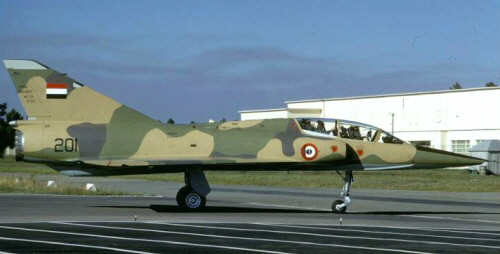
Libyan Mirage 5DE and DD versions in the factory


Egyptian era - Before the Yom Kippur War
The first Libyan cadets arrived in France in 1970, for Mirage 5 retraining. But Libya did not have enough of personnel to operate its newly acquired high-speed Mirage 5 aircraft, as a solution, offered to loan the several Mirages to the Egyptian Air Force, to fight with them against Israel. Therefore, the first two pilot training groups that, who traveled to France for the initial Mirage conversion course in 1970, nearly half of them were of Egyptian military person. These Egyptian Air Force pilots had previously flown Su-7BMK, MiG-17 ground-attack, or MiG-21 fighter aircrafts. The returned Libyan and Egyptian personnel formed the basis of the two first Mirage training squadrons in Libya at Mitiga and Nasser airfields from 1971.
By 1973, Egypt already had significantly distanced itself from President Gaddafi. Therefore:
-
The Libyan 1010th Mirage 5 Squadron did not take part in the war. Just six days after the war's conclusion, they relocated to Egypt at Tanta Airport
-
just two days into the october war, two Libyan Arab Air Force (LAAF) officers arrived at Tanta to negotiate the return of the Egyptian 69th squadron’s Mirages. Egypt, however, refused this request and only returned the Mirage 5 fighter-bombers to Libya in 1974, after receiving their own factory-new Mirage 5SDE aircrafts from France!
-
Egyptian Air Brigade 306 left Libyan Nasser (Tobruk) Airport and moved back to Egypt after the Yom Kippur War.

Factory test flights of Libyan Mirage 5D attack aircraft over France.
Libyan Mirage 5's operations in the second half of the 1970s
After the Yom Kippur War, the first Libyan Mirage unit was divided into two squadrons. The 1010th Squadron ‘Jerusalem’ was assigned a combat role, and the 1020th Squadron ‘Tira’ was assigned a training role. By 1976, sufficient personnel, including pilots and technicians, had been trained, enabling the deployment of two new active combat Mirage 5 squadrons to the eastern and western regions of Libya. From Mitiga Air Base:
-
The 1030th Squadron relocated to Al-Watiya Air Base at the end of 1976.
-
The 1040th Squadron moved to Gamal Abdel Nasser (Tobruk) Air Base
.
Starting in 1977, three of Libya's five military airports were home to Mirage 5 combat squadrons, while on the fourth flew MiG-23MS ‘Flogger-E’ aircraft by mixed Syrian and Libyan personnel.
The retraining of new pilots was conducted by the 1020th Squadron as an OCU at Mitiga Air Base. Meanwhile, combat training occurred in France during the second half of the 1970s. Libyan pilots traveled to Strasbourg Air Base for reconnaissance personnel training and to Dijon Air Base for advanced combat pilot training on Mirage IIIE aircraft during this period.
Beginning in 1972, new Egyptian pilots traveled to Nasser Airport in Libya for Mirage 5 combat training. Egyptian personnel were trained by a combination of Pakistani and Egyptian instructors who had returned from France. The training program spanned approximately ten months at the Nasser air base, during which each Egyptian pilot accumulated roughly 100 hours of flight time on the Mirage 5 aircraft.
During this time, the Egyptians rotated several of their MiG-21 units to Nasser AB to provide their pilots with opportunities for dissimilar air combat maneuvering exercises. This training was crucial in helping them develop tactics for countering Israeli Mirage.
The first group of Egyptian crew relocated from Nasser airport in Libya to Tanta Air Base in Egypt on April 7, 1973. At Tanta AB, the 69th squadron was established, consisting of the initial twenty Egyptian pilots who had access to nineteen Mirage 5Ds and two Mirage 5Rs. Concurrently, a second group of Egyptian pilots was undergoing conversion training too on Mirages in Libya at the Nasser Air Base so that they would later join the 69th squadron.
The first factory new Mirages were delivered to Libya in early 1971, and officially entered service with two training units:
-
Mitiga (Tripoli) Air Base: 1010th ‘Jerusalem’ Squadron, which acted as the Libyan Operational Conversion Unit (OCU) and was supervised by several Pakistani and French instructors
-
Nasser (Tobruk) Air Base: A newly established Egyptian Operational Training Unit (OTU), consisting of Pakistani and Egyptian instructors - who returned from retraining in France
From the two training units, one Libyan (1010th) and one Egyptian (69th) Mirage 5 combat aviation squadron was planned to be established by 1973.
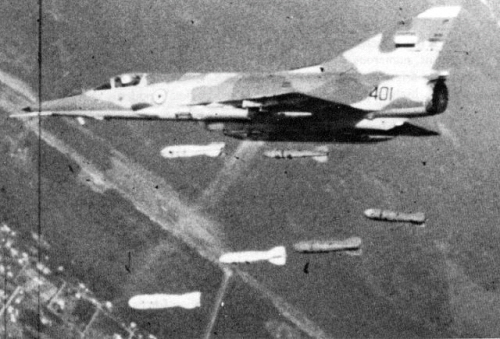
Libyan Mirage 5 - Locations and Squadrons
Between 1977 and 1978:
There were no dedicated interceptor or reconnaissance Libyan Mirage Squadron. Each unit operated a mix of Mirage 5D fighter-bombers, Mirage 5DE interceptors and Mirage 5DR reconnaissance fighters.

Libyan 1040th Squadron’s Dassault Mirage 5DE in front of the typical British hardened aircraft shelter at Gamal Abdel Nasser (Tobruk) Air Base
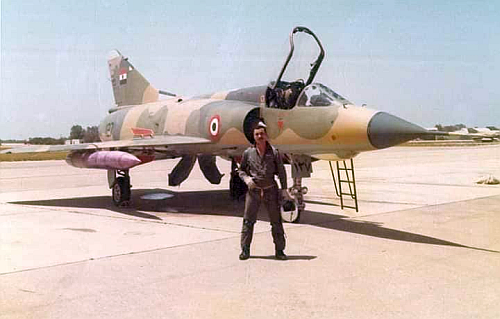
The 1010th or 1020th Squadron’s Mirage 5DE combat aircraft at Mitiga (Tripoli) airport in the seventies.
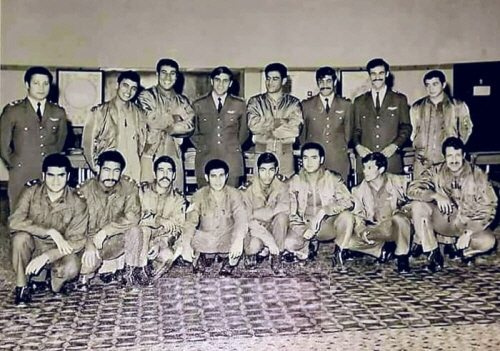
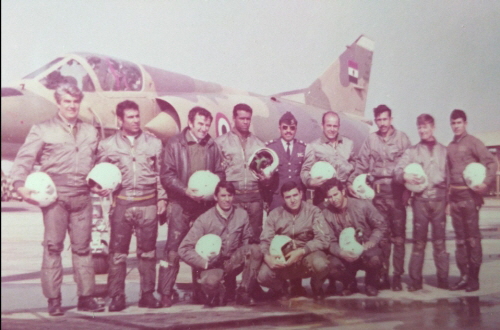
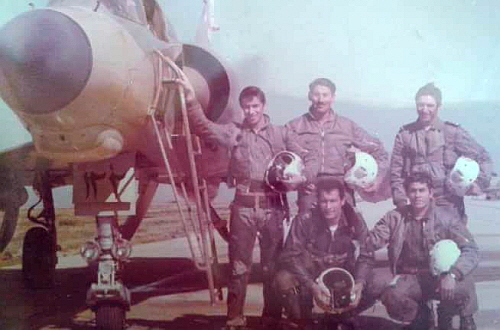
Libyan Mirage 5D and Mirage 5DE combat aircrafts at Mitiga airbase in the middle of seventies with Libyan, Pakistani and French instructors
The Mirage 5DEs were armed with only one Matra R.530 air-to-air missile, which proved troublesome to operate. Instead, the main air-to-air armament for Libyan Mirage 5DE and Mirage 5Ds in the seventies consisted of two 30mm cannons, which was used already in 1973 against an Italian ship.
In 1973 the relations between Italy and Libya deteriorated. On 21 September 1973, an Italian Navy corvette Visintini (F546)was sailing in the Sicilian Strait. Two Libyan aircraft approached the Italian ship and opened fire with 30mm DEFA cannons, scoring several hits and injuring one sailor. Later an another pair of Mirages also attacked, which this time killed one and injured another sailor.
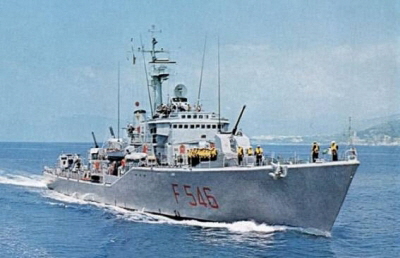
F 546 - ITS Licio Visintini Source: seaforces.org
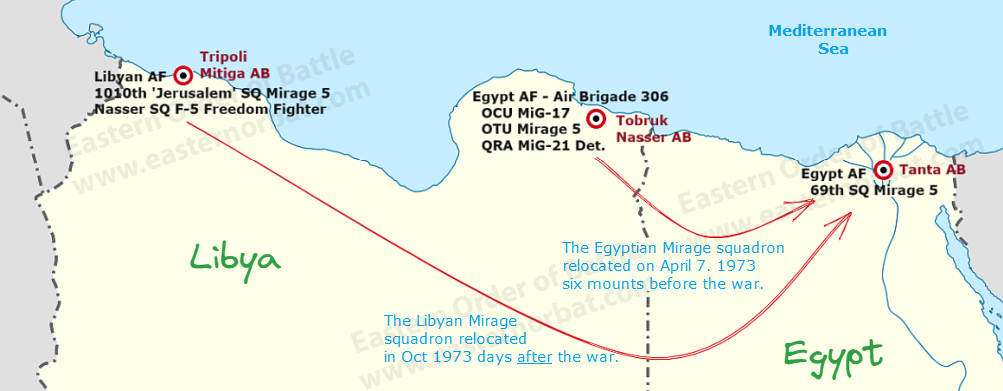


Libya's relations with Egypt saw a continuous deterioration between 1974 and 1977. The Libyan army initiated several border clashes, prompting Egypt to mobilize its forces along the border. In 1977, the Egyptian Air Force relocated additional units of Sukhoi Su-7BMK, Su-20, Mirage 5SDE, and MiG-21 aircraft to Marsa Matruh Air Base and nearby airfields in Egypt. Libya, in response, dispatched more Mirage 5 fighter-bombers and Soko J-21 Jastreb aircraft to Gamal Abdel Nasser (Tobruk) and Kufra airports as reinforcements.
The Egyptian-Libyan War erupted as a brief border conflict between July 21st and July 24th, 1977. During the initial two days of the conflict, Libyan Air Force Mirage 5s conducted low-level strikes against Egyptian ground forces. On the third day, Libyan Mirage fighter-bombers targeted locations inside Egypt, including Mersa Matruh Air Base. Egyptian air defenses claimed several Libyan Mirage fighter-bombers shot down during these engagements. While one Libyan Mirage 5 successfully downed an Egyptian Tu-16s bomber using cannon fire.
Libya lost seven or eight Dassault Mirage 5s:
-
one to friendly fire
-
one to cannon fire from an Egyptian fighter
-
two in mid-air collision
-
one by accident
-
two damaged and written-off
Furthermore, two Mirages were damaged, but repairable.

in the meantime, the Libyan Arab Air Force intensively used Dassault Mirage 5 aircraft in the first half of the eighties:
-
In 1980, Libyan Arab Air Force (LAAF) Mirage 5 interceptors were involved in several incidents with US and French reconnaissance aircraft flying off the Libyan coast.
-
On March 23, 1980, two Libyan Mirage 5s opened fire on a French Atlantic aircraft from the A ronavale that was flying over the Mediterranean Sea off the Libyan coast. Fortunately, nobody on board was injured.
-
On September 21, 1980, five Mirage 5s intercepted an USAF RC-135 reconnaissance aircraft while it was flying 200 miles off the Libyan coast. The reconnaissance aircraft was escorted by three Grumman F-14A Tomcats from the aircraft carrier USS John F. Kennedy (CV-67), and they managed to force the Libyans away.
-
In 1981, when the US Navy initiated Operation FON (Freedom of Navigation) in the Gulf of Syrte, US Navy aircraft entered the airspace south of the 'Line of Death.' Libyan fighter jets, which included Mirage 5 aircraft, intercepted the American planes.
-
In 1983, the French military intelligence estimated that the Libyan Arab Air Force was operating ten Mirage 5s combat aircraft inside Chad in October and November 1983 (with Libyan Mirage F.1s, Su-22/22Ms, Tu-22s, and SF.260s among other things )
-
In 1984, the French Navy deployed its aircraft carrier Foch (R-99) ship off the Libyan coast. On 15 October 1984 it scrambled two Mirage 5s to intercept the French Navy F-8E(FN) Crusader from the.
Libyan Mirage 5's operations in the first half of the eighties
The map of the Egyptian–Libyan War in 1977
The 1040th Squadron’s Mirage 5DE in front of the hardened aircraft shelter at Gamal Abdel Nasser (Tobruk) Air Base. Photo: Muhammad Al-Naaaji

Until 1983, the order of battle of the Mirage 5 units in Libyan Arab Air Force remained unchanged. Only the 1020th Squadron ‘Tira’ was disbanded before. So far, nearly thirty aircraft have been lost out of the original 110.
-
At least four in Egypt between 1973 and 1974
-
Seven in the 1977 Egypt-Libya War
-
More than 14 incidents between 1970 and 1983
Of the approximately 80 Mirage 5s remaining, the Lib an Arab Air Force kept only about 60 Mirage 5 fighters in operational condition at any given time. These comprised the primary equipment of three aviation squadrons.
Libyan Mirage 5 - Locations and Squadrons
until 1983:
In the meantime, the type also received the first Matra R.550 Magic short-range air-to-air missile in 1980.
France imposed an arms embargo upon Libya in August 1983 because of the situation in Chad. Nevertheless about 85 percent of Libyan Mirage 5s could send to France for overhauls yet between 1977 and 1985. But later five Libyan Mirage 5Ds (serials 428, 429, 433, 438, and 439), and two Mirage 5DRs (serials 304 and 360) were impounded at the Dassault plant in Toulouse Colomiers.
As a result of the French arms embargo, the Libyans also had to switch to home training in the training of Mirage 5 crews. The new Libyan Mirage training center was established at the Al-Watiya Air Base, where the 1010th Aviation Squadron also moved from Mitiga airport in 1983.
The passive Libyan Mirage 5 forces were merged on the Mitiga (Tripoli) airport at the end of the eighties. The Mirage training squadrons and the last combat Mirage unit (1040th Squadron) was also disbanded. The task of the 1040th Squadron was taken over by a MiG-23MLD QRA detachment at Tobruk airport. Alternately, the 1023rd and 1060th squadrons provided air defense along the Libyan-Egyptian border from the end of the 1980s.
Libyan Mirage 5's operations from 1983 - The passive period
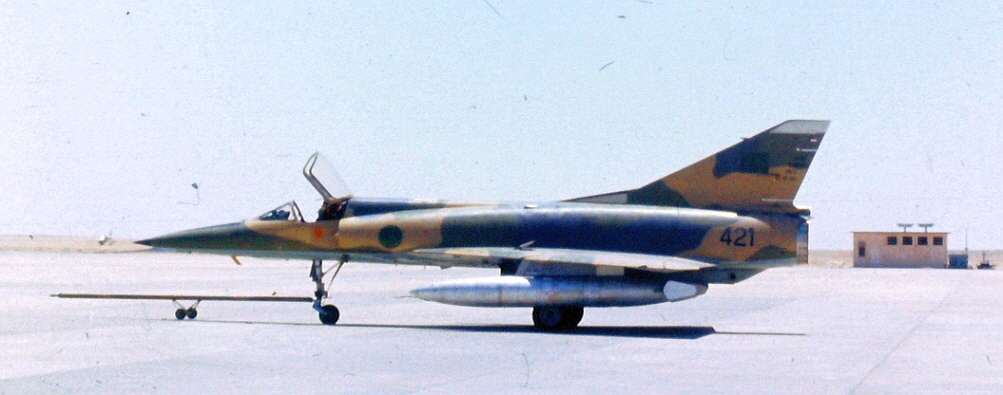
In the second half of the eighties the Nasser (Tobruk) Air Base operated the only Libyan Mirage 5 combat air unit along the Egyptian border, the 1040th Squadron. While at Al-Watiya Air Base, the 1030th and 1010th Squadron worked as Mirage Operational Conversion and Operational Conversion Training Units.
But due to the French arms embargo, their combat capability was greatly reduced. It is not known that Libyan Mirage-5s were used in combat in the second half of the eighties.
Libyan Mirage 5's operations in the nineties
In March 1990 the French goverment permission for the Dassault company to respect its maintenance contracts with the Libyan Arab Air Force again and even deploy a team of technical advisors to Libya. As well as Paris permitted delivery of the held back Mirage 5s and Mirage F.1 jets from Dassault plant in Toulouse Colomiers to Libya.
Therefore the LAAF continued operating its Mirage 5s and F.1s, even after it was forced to store most of its Soviet techniques the mid-1990s.
The Mirage 5 aircraft type has been revalued again! At the beginning of the nineties, the 1010th Mirage 5 Squadron was reorganized at the Mitiga (Tripoli) airfield. Around 16 Mirage-5s operated at Mitiga airfield until 2003, when they were purchased by Pakistan.
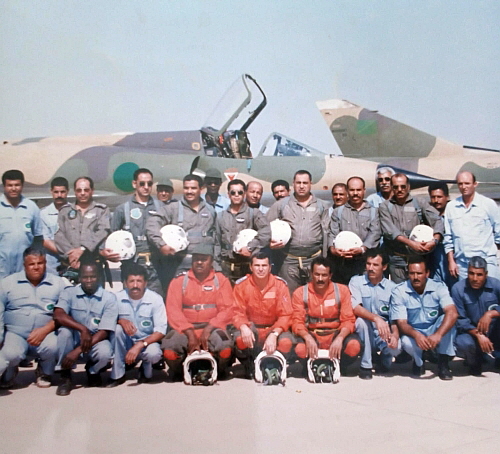

Sources:
-
Arab MiGs: Volume 4: Transition and War of Attrition, 1967-1973 by Cooper, Tom; Nicolle, David; Nordeen, Lon
-
Arab MiGs: Volume 6 - October 1973 War, Part 2 Paperback by Tom Cooper, Albert Grandolini, David Nicolle, Lon Nordeen, Martin Smisek
-
AFM nov. 2017: Masters of Mirage maintenance by Alan Warnies
-
Libyan Air Wars: Part 1: 1973-1985 (Africa@War) by Tom Cooper, Albert Grandolini
-
Libyan Air Wars: Part 2: 1985–1986 (Africa@War) by Tom Cooper, Arnaud Delande, Albert Grandolini
-
Libyan Air Wars: Part 3: 1986–1989 (Africa@War) by Tom Cooper, Arnaud Delande, Albert Grandolini
-
And Tijani Alwagaa's researches
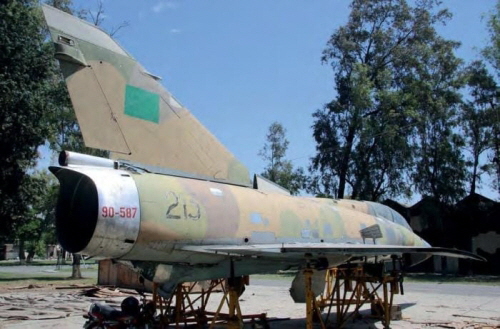
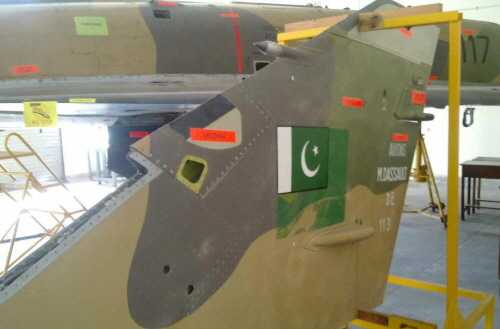
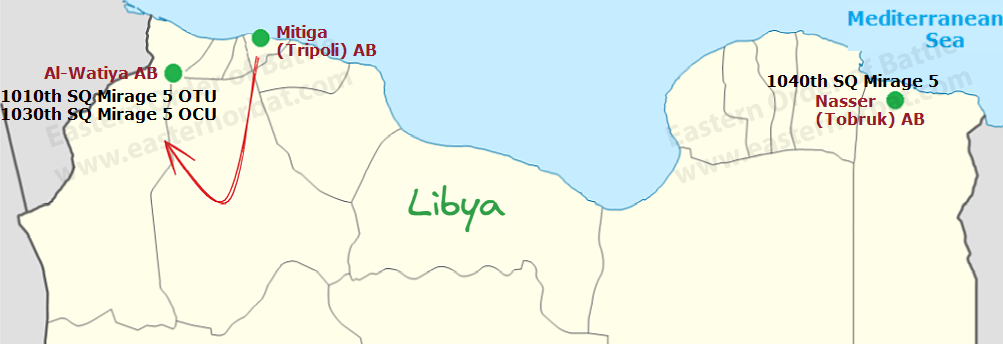
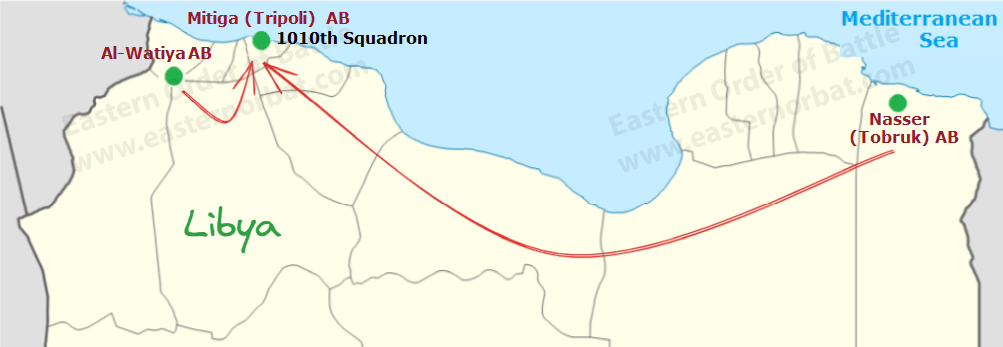
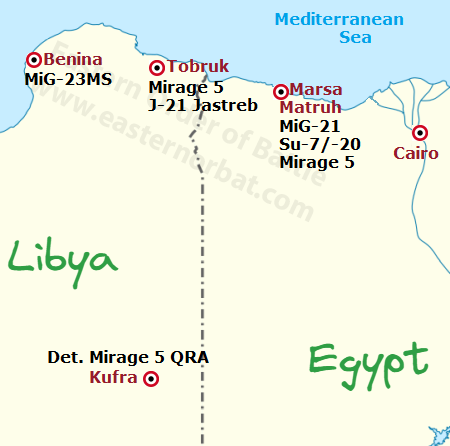
Pakistan purchased 76 Libyan Mirage 5 aircraft in two tranches between 2004 and 2005. Pakistan primarily used parts, engines and wings, but planned to make ten dualseaters and reconnaissance jets airworthy again.
The Libyan Mirage fleet flew relatively little over 32 years, with an average of 600 hours flown per Mirage 5. Between 1971 and 2003, 34 Mirage 5s were scrapped and 12 Libian and one Pakistani pilots lost their lives in Mirage 5 accidents.
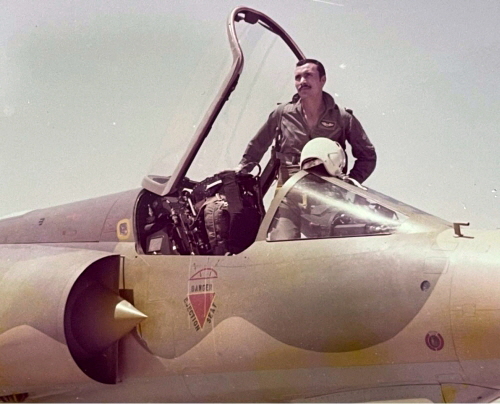

Libyan Mirage 5 jets in Pakistan. Photo: Alan Warnies